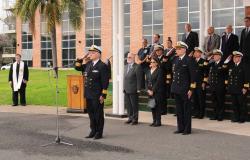The Helicobacter pylori, “is a gram negative bacterium that is housed in the stomach and invades the different layers of the structure of the gastric tissue,” explained the academic and researcher of the UTALCA, Rodrigo Moore Carrasco, who also explained that, “although its presence is directly associated with the development of gastric cancer, not all individuals that carry it and there are other complications produced by This bacterium. ”
Classified as type 1 carcinogen by the world Health Organization (WHO), H.Pylori shows a high presence in Chile, over the world average. The academic indicates that its distribution in our country varies depending on the region: while we find low -carrying levels in the north, in the southern and southern area of the country we can register a prevalence of more than 70% of the population ”,
“There is no clarity of the reasons, he added, but if there is scientific evidence that shows that countries that guide their coast to the Pacific have higher levels than countries that are inland or look towards the Atlantic Ocean.”
The best way to detect the infection, said the specialist, is the high digestive endoscopy, which allows the state of the mucosa to be observed directly and take samples. However, in Chile, access to this exam is limited, which makes early detection difficult, according to Moore. In Japan, he exemplified, with statistics similar to ours, “they have implemented a screening system with massive endoscopy and on behalf of the State.”






